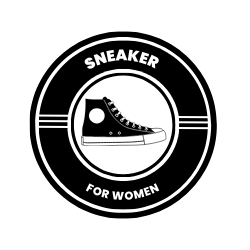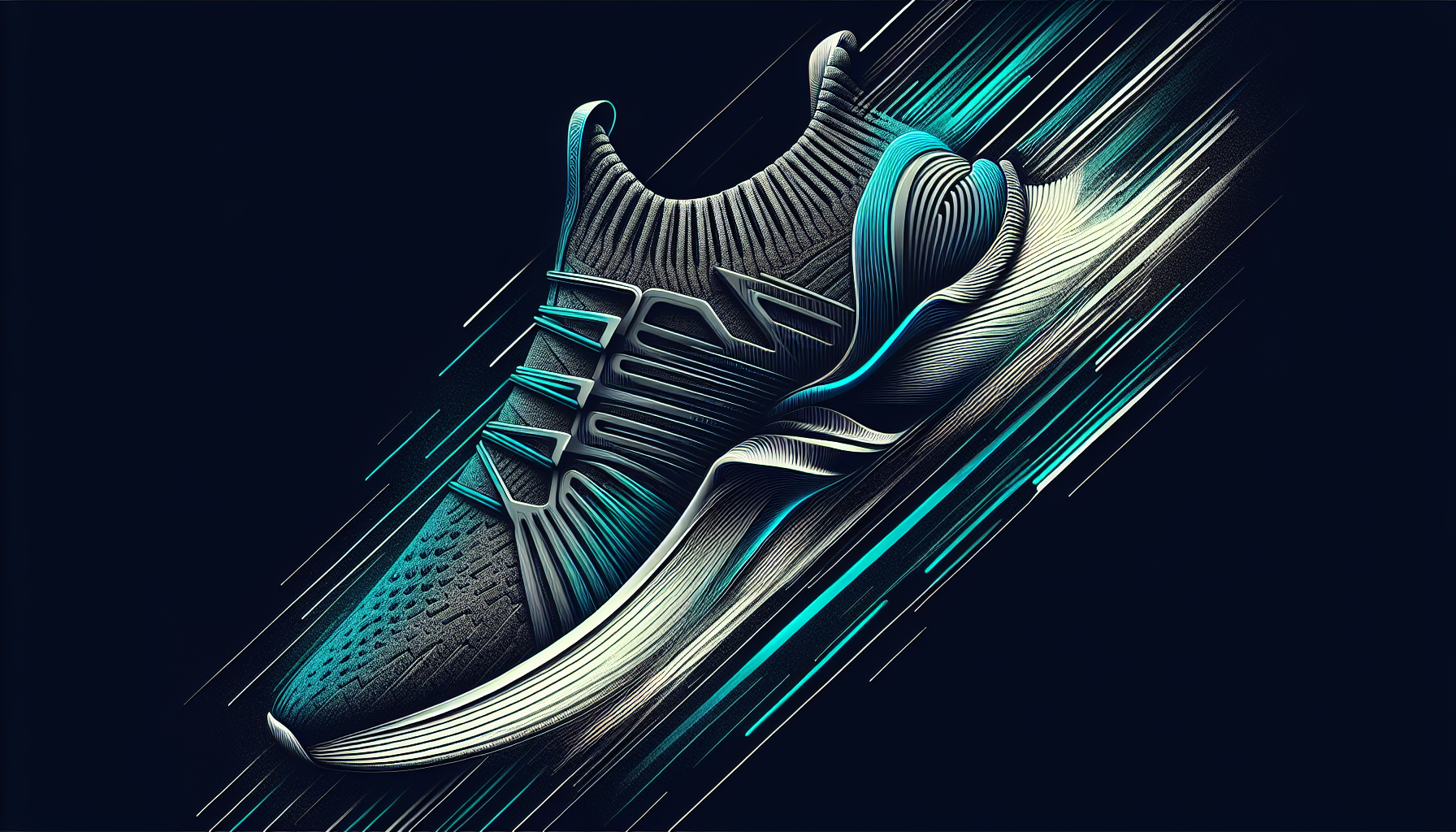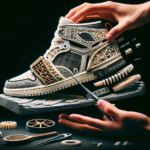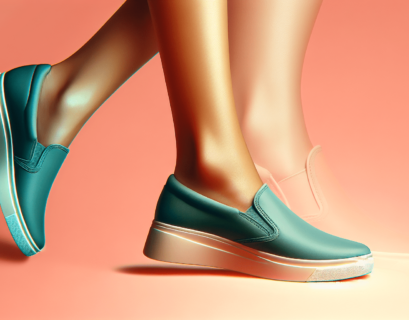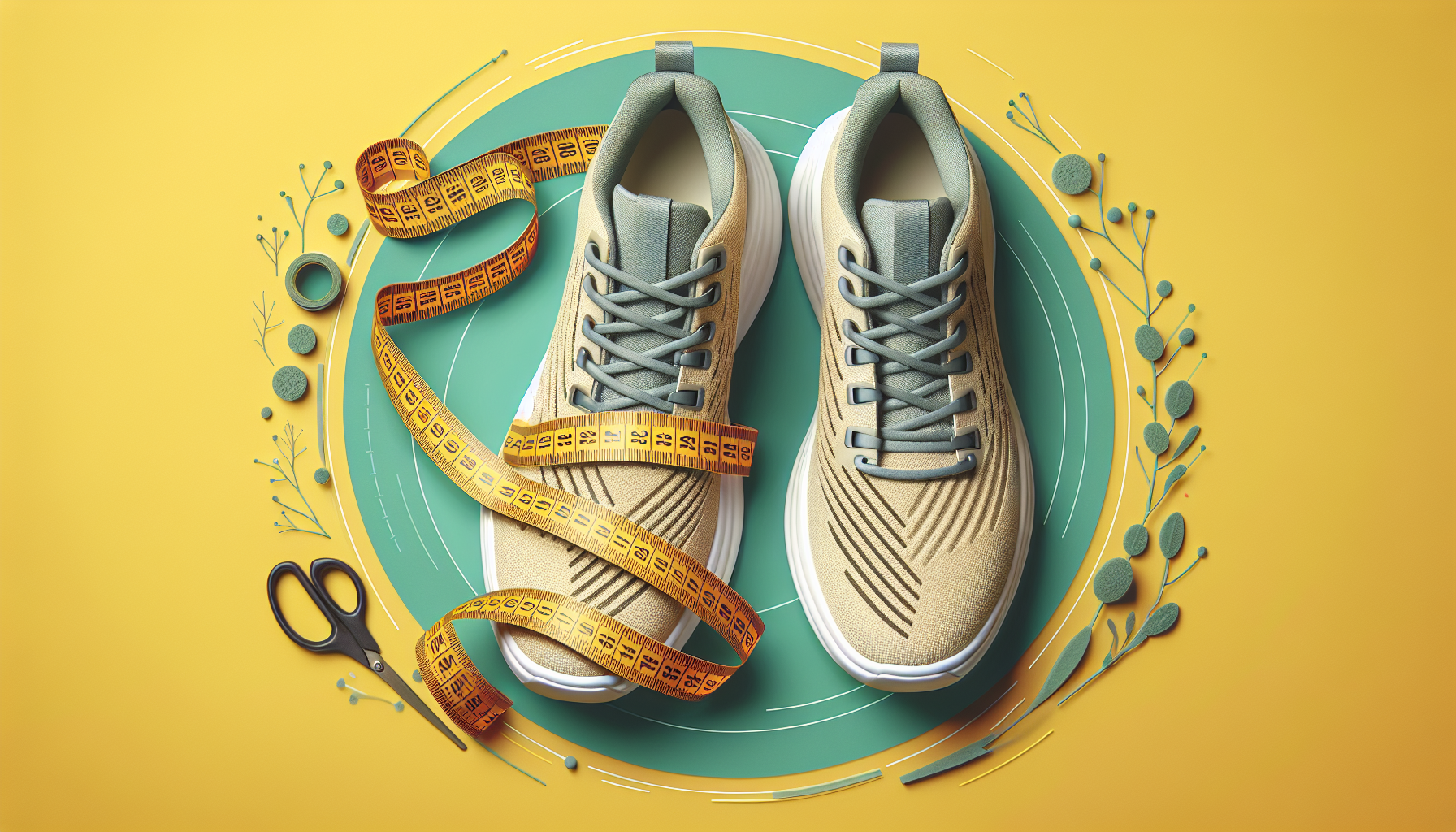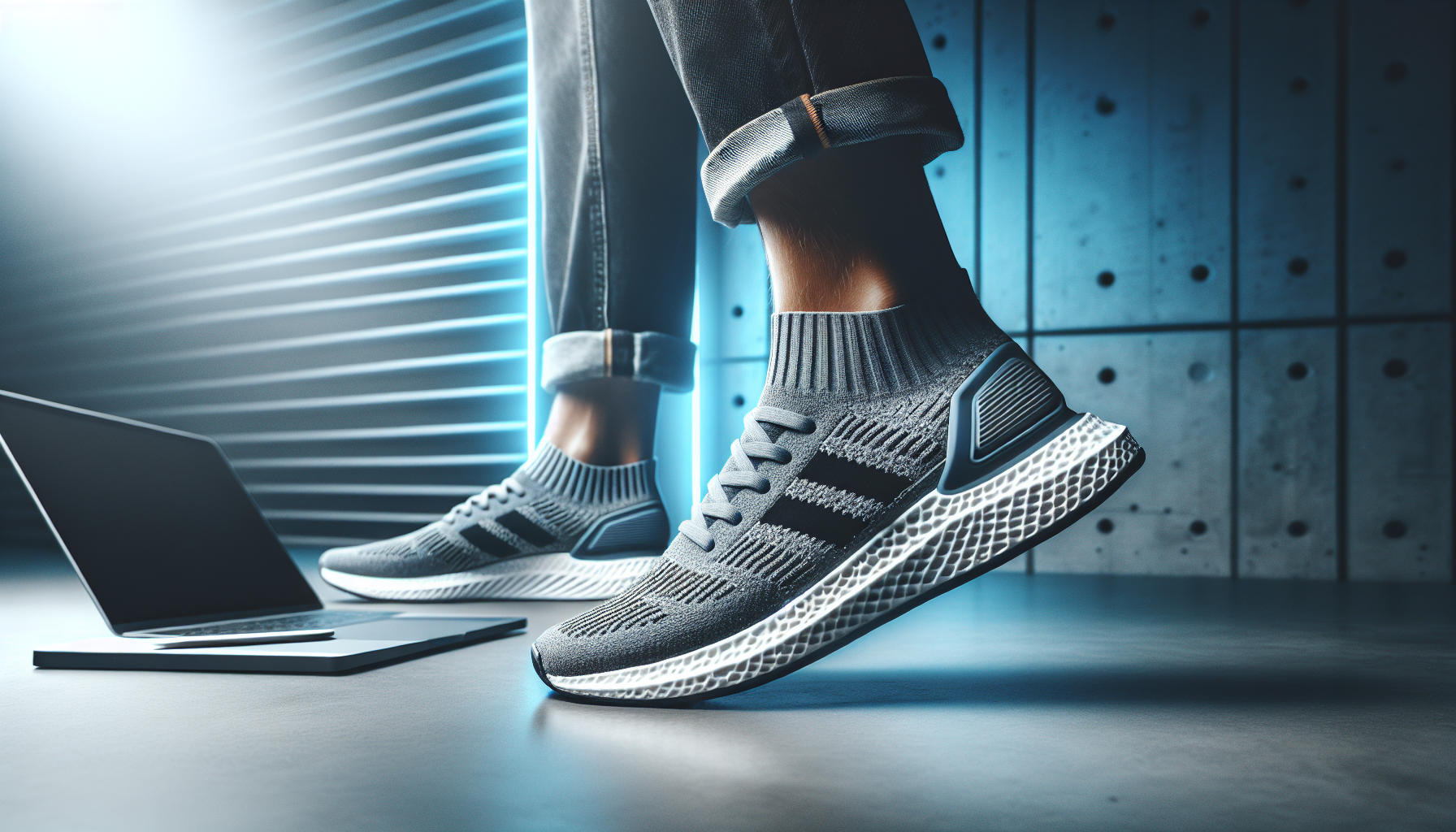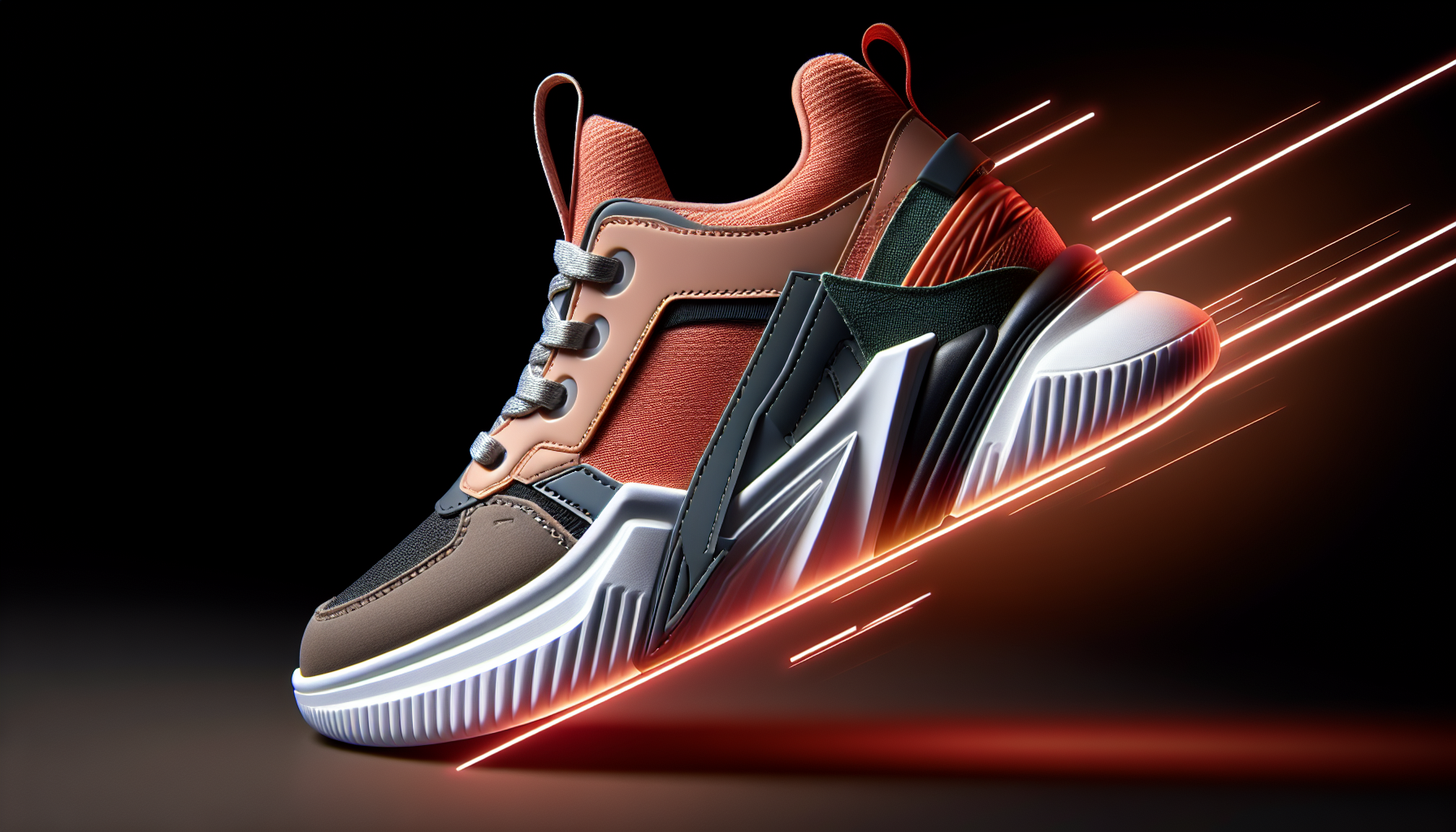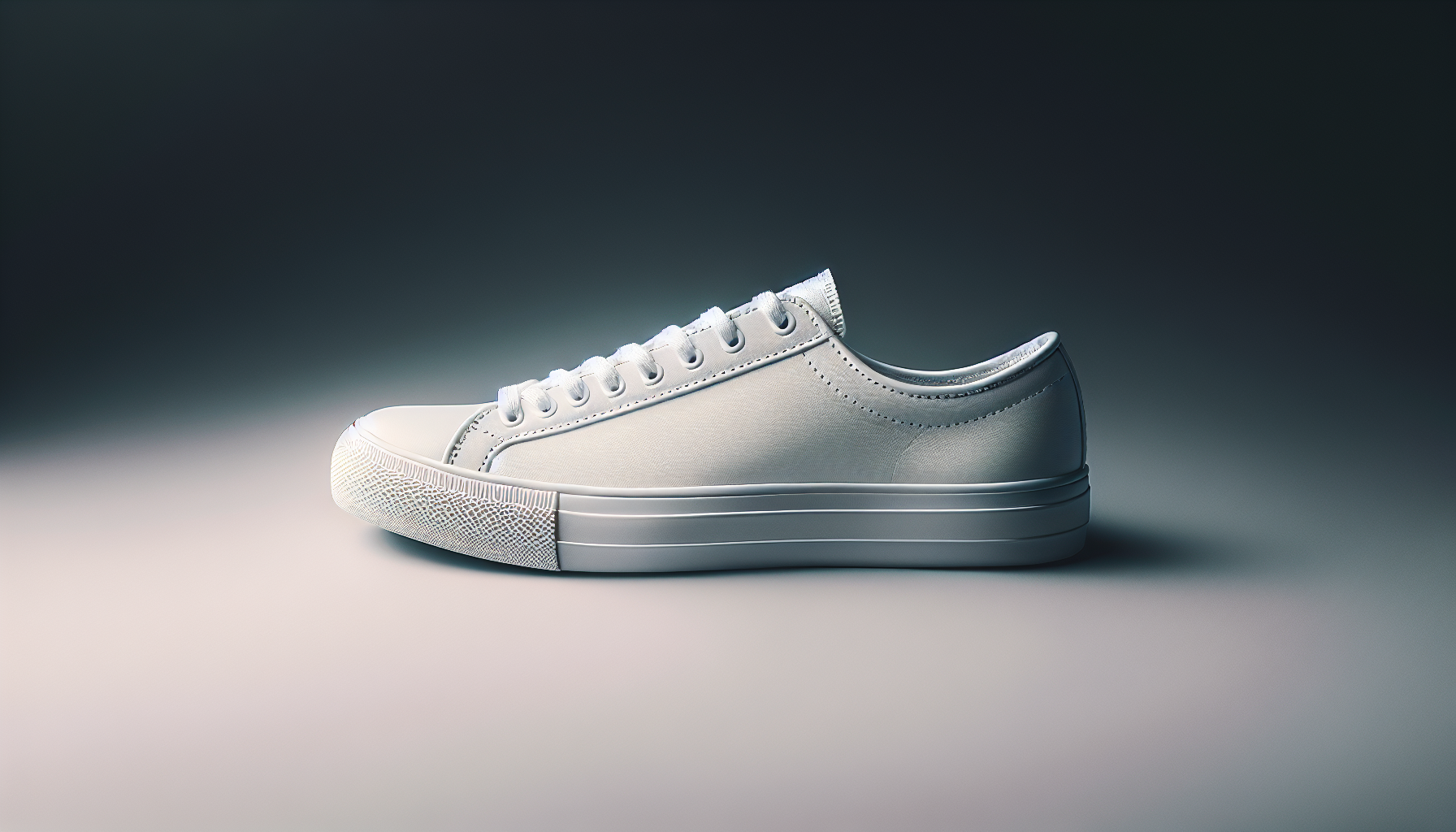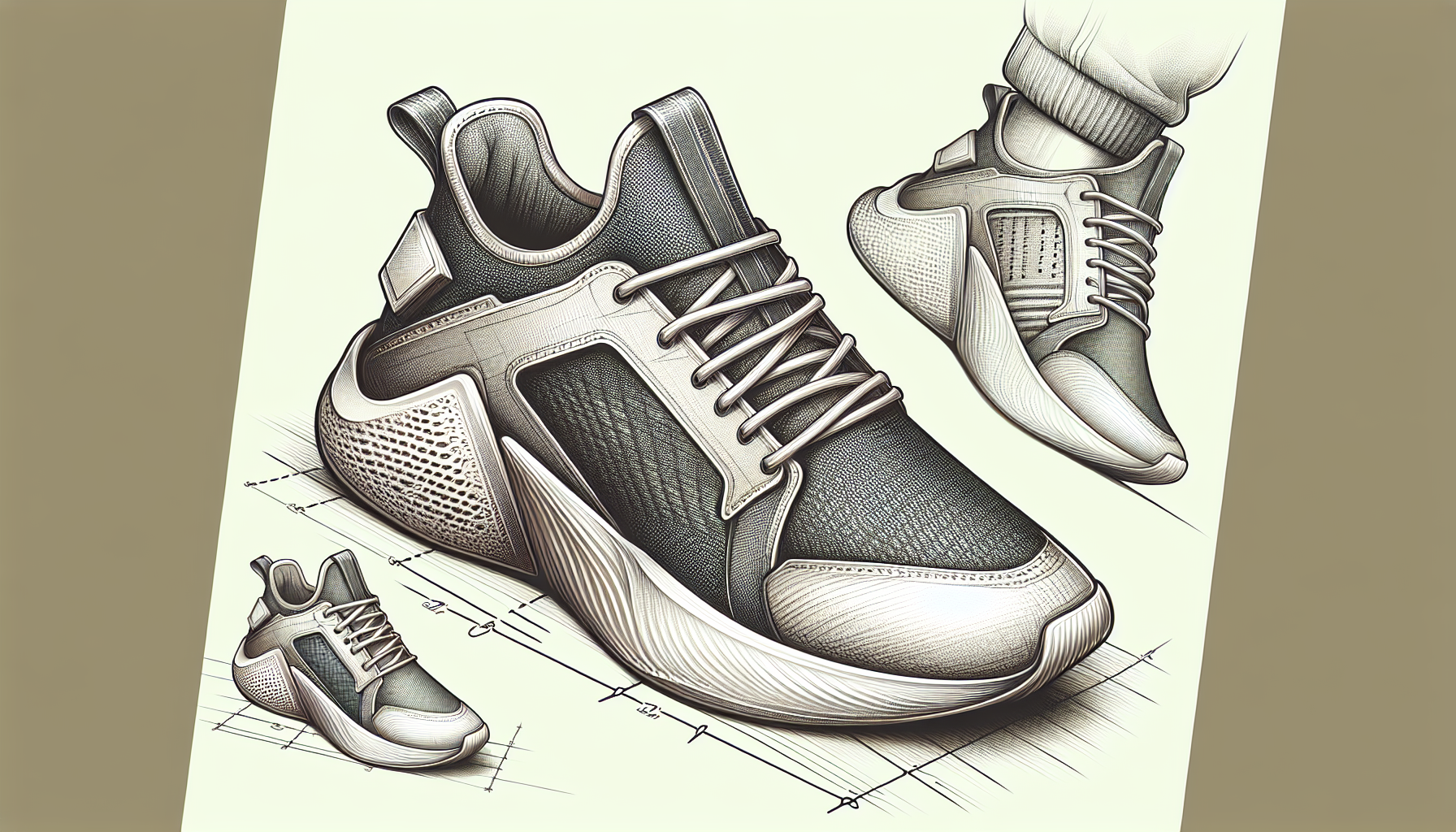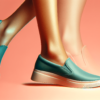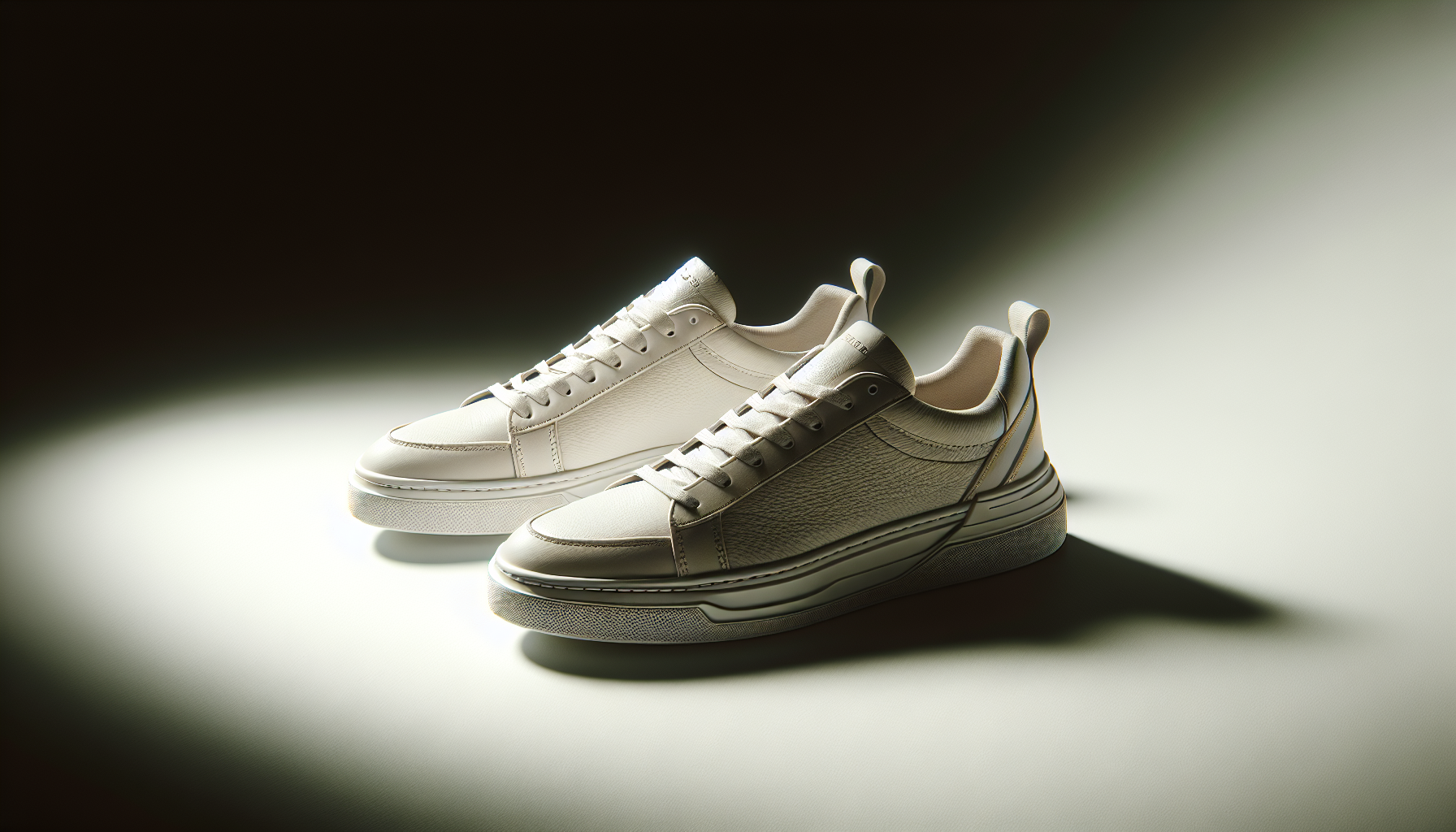Whether you’re a seasoned athlete or just getting started on your fitness journey, finding the perfect fit for your sneakers is essential. The right pair of sneakers can make all the difference in your performance and overall comfort. With the vast array of options available, it can be overwhelming to know where to begin. But fear not! In this article, we will guide you through the process of making informed choices when it comes to selecting the ideal sneakers for your needs. So, lace up and get ready to step into a world of footwear possibilities!
Understanding the Importance of Fit in Sneakers
Why sneaker fit matters
When it comes to sneakers, fit is of utmost importance. The right fit ensures comfort, prevents foot pain, and helps in maintaining healthy feet. Wearing ill-fitting shoes not only leads to immediate discomfort but can also have long-term effects on foot health. To fully understand the significance of fit in sneakers, it’s essential to explore the potential consequences of choosing the wrong size or style.
Long-term effects of ill-fitting shoes
Wearing sneakers that don’t fit properly can result in several long-term foot problems. Firstly, ill-fitting shoes can lead to toe pain and blisters, especially if they are too narrow. Similarly, loose-fitting shoes can cause heel pain and slippage, leading to discomfort and potential injuries. Unsupported shoes can also contribute to arch pain, especially for those with high or low arches. By wearing sneakers that fit well, these issues can be avoided, allowing you to enjoy daily activities without foot pain or discomfort.
Zooming on comfort versus style
While style plays a significant role in sneaker selection, it should never be prioritized over comfort. It is possible to find fashionable sneakers that also provide a comfortable fit. By prioritizing both comfort and style, you can ensure that your sneakers not only look good but also keep your feet happy. With the wide range of options available, there is no need to compromise on either aspect.
Know Your Foot Shape and Size
Determining foot length
Before buying sneakers, it’s crucial to know your foot length accurately. To measure your foot length, place a piece of paper against a wall and stand with your heel against the wall. Mark the farthest point of your foot and measure the distance from the wall to the mark. This measurement will give you an accurate idea of your foot length, helping you choose the right sneaker size.
Calculating foot width
Along with foot length, foot width is another crucial measurement to consider. To determine your foot width, measure the widest part of your foot using a tape measure. You can also use various online resources to determine which category your foot width falls into, such as narrow, medium, wide, or extra-wide. This information will assist you in finding the sneakers that provide the best fit for your feet.
Recognizing foot arch type
Understanding your foot arch type is essential as it impacts the support and comfort you require from your sneakers. There are three main arch types: high arches, low arches (flat feet), and neutral arches. By observing the shape of your foot’s arch when stepping out of the shower or examining your footprint on a piece of paper, you can identify your foot arch type. This knowledge will guide you in selecting sneakers with the appropriate arch support for optimal comfort.
How growth and age affect foot size
Foot size can vary throughout different stages of life due to growth and aging. Children’s feet, for example, tend to grow rapidly, necessitating regular measurements and adjustments to their sneaker size. It’s essential to account for potential growth when selecting sneakers for children to ensure they provide adequate support. Similarly, adult feet can also change due to factors such as weight gain, pregnancy, or the natural aging process. Regularly measuring your foot size and taking note of any changes will help you maintain a proper fit and avoid discomfort or foot-related issues.
Different Sneaker Styles and their Fits
Low tops versus high tops
Sneaker styles can significantly impact the fit and function of the shoes. Low-top sneakers offer a more relaxed fit and are suitable for everyday wear. They provide excellent freedom of movement and are often preferred by individuals who don’t require ankle support or desire a more casual look. On the other hand, high-top sneakers provide additional ankle support and stability, making them ideal for activities that involve more intense movement or require increased ankle stability. Understanding the differences between low tops and high tops can help you choose the style that best suits your needs and preferences.
Slip-ons versus lace-ups
Slip-on sneakers and lace-up sneakers offer distinct fit experiences. Slip-ons are easy to put on and take off without the hassle of laces. They provide a comfortable, snug fit and are convenient for quick outings or those who prefer a more relaxed fit. Lace-up sneakers, on the other hand, offer customizable fit and support. The laces allow you to adjust the tightness according to your preference, ensuring a secure fit that keeps your feet stable. Consider your lifestyle and desired level of convenience when choosing between slip-ons and lace-ups.
Different sneaker brands and their sizing idiosyncrasies
When it comes to sneaker sizing, it’s essential to be aware of the variations that exist among different brands. Each brand may have its own sizing standards, meaning that a specific size in one brand may not necessarily correspond to the same size in another brand. It’s always recommended to refer to the brand’s sizing chart or try on the sneakers before making a purchase. Additionally, reading reviews or consulting with fellow sneaker enthusiasts can provide valuable insights into the sizing idiosyncrasies of different brands.
Guide to Sneaker Sizing Standards
Understanding US, UK, EU, and CM sizing
Sneaker sizing can be challenging to navigate due to the various standards used worldwide. The most common sizing standards are US, UK, EU, and CM sizing. The US sizing system follows a numerical scale, while the UK system uses alphabetic sizes. The EU sizing system is based on centimeters (CM), correlating your foot length to a specific size. It’s crucial to familiarize yourself with the sizing standards used by the brand you’re interested in to ensure an accurate fit.
How unisex and gendered sizing differs
Unisex and gendered sizing can vary, and it’s essential to understand the differences. Unisex sizing, as the name suggests, caters to both men and women. Typically, unisex sneakers are sized by men’s standards, so it’s essential to remember that a unisex size may not align directly with your usual women’s size. Women’s-specific sizing, on the other hand, is designed with women’s feet in mind, accounting for anatomical differences. Be aware of whether the sneakers you’re considering are unisex or gender-specific to ensure the best possible fit.
Children’s sizing guide
Children’s feet are constantly growing, and selecting the right size is crucial to support their development and comfort. Different brands have their own sizing guides for children’s sneakers, which may include age ranges or foot length measurements. It’s essential to regularly measure your child’s feet and refer to the specific brand’s sizing guide when purchasing sneakers. Remember to leave room for growth, but not too much to compromise stability and support.
Trying on Sneakers Properly
Ideal time of day for fitting sneakers
When trying on sneakers, it’s important to consider the ideal time of day for the most accurate fit. Feet can swell throughout the day due to various factors like physical activity or heat, so it’s recommended to try on sneakers later in the day. By doing so, you can ensure that your sneakers fit comfortably even during times of slight swelling, preventing any discomfort or tightness that may occur later in the day.
Recommended socks during fitting
To ensure an accurate fit, it’s crucial to wear the socks you would normally wear with your sneakers when trying them on. The thickness and material of your socks can affect the fit, so choosing socks that closely resemble what you typically wear will provide the most accurate fit assessment. By wearing the right socks, you can avoid any surprises regarding fit once you start wearing your new sneakers regularly.
Half-size and width considerations
Sneaker sizing often includes half sizes and width options to cater to various foot shapes. If you find that your usual whole size feels slightly too tight or too loose, opting for a half size up or down can help achieve the perfect fit. Similarly, brands that offer different width options can accommodate those with wider or narrower feet. It’s essential to consider these factors and explore the availability of half sizes or width options when selecting your sneakers.
Recognizing Good Fit in Sneakers
Space-check at the front and sides
When you have the sneakers on, there should be some space between your longest toe and the front of the shoe. This allowance provides room for natural movement and helps prevent discomfort or injury. Additionally, the sides of the shoe should not feel too tight or constricting. A good fit allows for unrestricted movement of the toes and avoids any pressure points that can cause pain or discomfort.
Heel-test for slippage
To determine whether the sneakers fit properly, perform a heel-test. Stand flat on your feet and gently lift your heels, then press them back down. If the sneakers fit well, your heels should stay securely in place without excessive slippage or movement. If your heels slide around or feel loose, it may be an indication that the sneakers are too big. Conversely, if there is tightness or discomfort around the heel, the sneakers may be too small.
Comfort-test during movement
Walking or moving around in the sneakers is an essential part of evaluating their fit. Pay attention to how your feet feel during each step and with different movements. If the sneakers rub against certain areas, cause pain, or feel too tight in specific spots, it’s an indication that they may not be the right fit for you. Optimal comfort during movement is a crucial aspect of a well-fitting pair of sneakers.
Expanding and Adjusting Sneaker Fit
Safe methods of stretching sneakers
If you find that your sneakers are slightly tight, there are safe methods to stretch them for a more comfortable fit. One common method is wearing thick socks and using a hairdryer to heat the tight areas while gently flexing your feet. Another option is using a shoe stretcher, which can gradually widen specific parts of the sneakers. These methods should be used with caution and in moderation to prevent any damage to the sneakers.
Benefits of shoe inserts and orthotics
Shoe inserts and orthotics can be beneficial for those who need additional support, cushioning, or correction in their sneakers. Inserts can provide extra arch support, cushioning for specific areas, or assist in correcting gait issues. Orthotics, which are custom-made inserts prescribed by healthcare professionals, can address more severe foot conditions and provide tailored support. Consulting a podiatrist or shoe specialist can help determine if inserts or orthotics would be beneficial for your specific foot needs.
Possible adjustments by a professional shoe fitter
If you’re having difficulty finding sneakers that fit perfectly, consider consulting a professional shoe fitter. These experts have extensive knowledge and experience in assessing and adjusting shoe fit. They can provide valuable insights into your foot shape and size, recommend brands or styles that may work best for you, and make necessary modifications to ensure optimal fit and comfort. A professional shoe fitter can be particularly helpful for individuals with specific foot conditions or unique fitting requirements.
Choosing Sneakers for Specific Activities
Running shoes versus training shoes
Choosing the right sneakers for different activities is vital to ensure adequate support and performance. Running shoes are designed with cushioning and shock absorption in mind, catering to the repetitive impact of running. They provide the necessary support and stability for forward motion. On the other hand, training shoes are more versatile, offering stability for a variety of movements like lateral, jumping, and weightlifting exercises. Understanding the specific demands of your chosen activity will help you select the appropriate sneakers for optimal performance and foot protection.
Sneakers for hiking and outdoors
For outdoor activities like hiking, it’s essential to choose sneakers that are specifically designed for the terrain and conditions you will encounter. Hiking sneakers typically have sturdy traction and ankle support to navigate uneven terrain and prevent injuries. They are often made of durable, water-resistant materials to protect your feet from the elements. Considering the duration, intensity, and environment of your planned outdoor activities will ensure that you select sneakers that can withstand the demands and provide the necessary comfort and protection.
Casual sneakers versus dress sneakers
Sneakers are not only practical for sports and outdoor activities but have also become a popular fashion choice for casual and even dressier occasions. Casual sneakers offer comfort, versatility, and a relaxed aesthetic, making them suitable for everyday wear. Dress sneakers, on the other hand, provide a more polished and sophisticated look while still offering the comfort of sneakers. When choosing between casual and dress sneakers, consider the overall style you’re aiming for and whether you need versatile day-to-day wear or something more formal.
Maintaining Fit with Sneaker Care
Preventing shrinkage and overstretching
Proper care is essential to maintain the fit of your sneakers. To prevent shrinkage, avoid exposing them to excessive heat or moisture. When cleaning your sneakers, follow the manufacturer’s guidelines and avoid using harsh chemicals or abrasive tools that can cause damage. Overstretching can be prevented by not wearing your sneakers for activities they are not designed for. By adhering to recommended care instructions and using your sneakers appropriately, you can ensure that they maintain their original fit and comfort for an extended period.
Regular cleaning and deodorization
Keeping your sneakers clean and fresh is not only essential for aesthetic purposes but also for their overall fit and longevity. Regularly cleaning your sneakers, especially after intense usage, helps remove dirt, debris, and bacteria that can contribute to odors and deterioration. Use appropriate methods and cleaning products based on the sneaker material to avoid potential damage. Additionally, utilizing deodorizing techniques such as airing them out, using baking soda, or using specialized sneaker deodorizer sprays can help keep your sneakers smelling fresh and ready for wear.
Appropriate storage practices
Proper storage is crucial to maintain the shape and fit of your sneakers when they are not in use. Avoid leaving your sneakers in damp or humid environments as this can cause them to lose their original shape. Opt for a cool, dry place to store your sneakers, away from direct sunlight or extreme temperatures. Additionally, using shoe trees or stuffing your sneakers with tissue paper can help prevent them from losing their form while in storage. By following appropriate storage practices, you can ensure that your sneakers are in optimal condition and preserve their fit over time.
Understanding Common Fit Problems
Toe pain and blisters from narrow shoes
Wearing narrow shoes can lead to toe pain and blisters, as they squeeze the toes together. When the toes are not allowed enough space to move naturally, friction and pressure can cause discomfort and skin irritations. To avoid these issues, it’s crucial to choose sneakers that provide ample room for your toes to wiggle and flex. Selecting sneakers with a wider toe box can prevent toe pain and blisters, ensuring a comfortable fit.
Heel pain from loose shoes
When the sneakers are too loose around the heel, it can result in heel pain and slippage. Loose-fitting shoes lack the necessary support to keep the heel stable during movement, causing the foot to slide inside the shoe. This constant friction can lead to blisters, discomfort, and potential injuries. To alleviate heel pain, it’s essential to choose sneakers that securely hold your heel in place without excessive movement, providing the necessary support and stability.
Arch pain from unsupported shoes
Wearing sneakers that don’t offer adequate arch support can lead to arch pain, especially for individuals with high or low arches. Insufficient support causes strain on the arches, resulting in discomfort and potential foot issues. To avoid arch pain, it’s crucial to select sneakers that provide appropriate arch support based on your foot type. Look for sneakers with cushioning or built-in arch support features to ensure that your arches are properly supported and comfortable throughout the day.
Troubleshooting fit problems
If you encounter fit problems with your sneakers, several troubleshooting steps can help address the issues. If your sneakers are too tight, you can try the stretching methods mentioned earlier or opt for a larger size. Conversely, if your sneakers feel too loose, using insoles or thicker socks may provide a more snug fit. It’s also beneficial to consult with a shoe specialist or podiatrist if you experience persistent fit problems or have specific foot conditions that require additional attention. They can provide personalized advice and solutions based on your unique needs.
Informed Choices: Finding the Perfect Fit for Your Sneakers
Finding the perfect fit for your sneakers is essential for comfort, foot health, and overall enjoyment. By understanding the importance of fit, knowing your foot shape and size, exploring different styles and sizing standards, trying on sneakers properly, and utilizing appropriate fit maintenance techniques, you can ensure that your sneakers provide the ideal fit for your feet. Invest time and effort in finding the right sneakers, and your feet will thank you for it as you step out in style and comfort.
